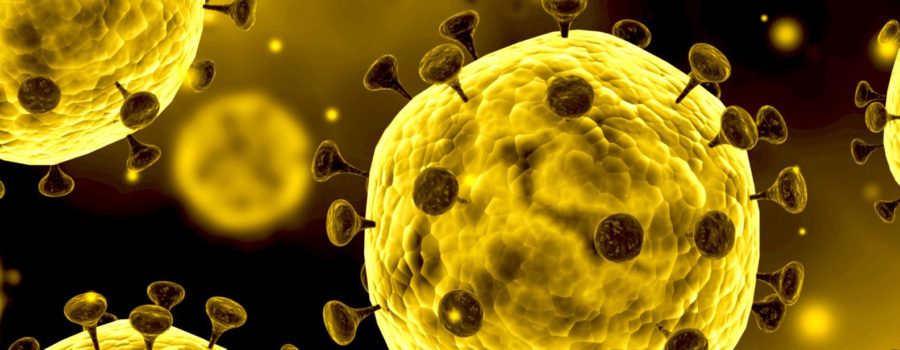What is the difference between a virus and bacteria?
The 7 Different Human Coronaviruses
Viruses are structurally different from bacteria. Viruses live and replicate inside of a human cell, they cannot live outside of this environment. Viruses insert their genetic material into a human cell’s DNA in order to reproduce. Coronavirus 19 actually insert their genetic material into a human cell’s RNA in order to reproduce.
What is DNA and RNA?
Deoxyribonucleic acid (DNA) and Ribonucleic acid (RNA) are perhaps the most important molecules in cell biology, responsible for the storage and reading of genetic information that underpins all life.
DNA is double-stranded, while RNA is single-stranded. RNA contains ribose as a sugar, while DNA contains deoxyribose. Also, three of the nitrogenous bases are the same in the two types (adenine, cytosine, and guanine), but DNA contains thymine while RNA contains uracil.

The main function of RNA is to carry information of amino acid sequence from the genes to where proteins are assembled on ribosomes in the cytoplasm. This is done by messenger RNA (mRNA). A single strand of DNA is the blueprint for the mRNA which is transcribed from that DNA strand.
|
Function | DNA replicates and stores genetic information. It is a blueprint for all genetic information contained within an organism | RNA converts the genetic information contained within DNA to a format used to build proteins, and then moves it to ribosomal protein factories. |
| Location | DNA is found in the nucleus, with a small amount of DNA also present in mitochondria. | RNA forms in the nucleolus, and then moves to specialised regions of the cytoplasm depending on the type of RNA formed. |

Coronaviruses are named for the crown-like spikes on their surface.
There are four main sub-groupings of coronaviruses, known as alpha, beta, gamma, and delta. There are 7 human coronaviruses now we have co-vid-19.
Common human coronaviruses
- 229E (alpha coronavirus)
- NL63 (alpha coronavirus)
- OC43 (beta coronavirus)
- HKU1 (beta coronavirus)
Other human coronaviruses
- MERS-CoV (the beta coronavirus that causes Middle East Respiratory Syndrome, or MERS)
- SARS-CoV (the beta coronavirus that causes severe acute respiratory syndrome, or SARS)
- SARS-CoV-2 (the novel coronavirus that causes coronavirus disease 2019, or COVID-19)
People around the world commonly get infected with human coronaviruses 229E, NL63, OC43, and HKU1.
Sometimes coronaviruses that infect animals can evolve and make people sick and become a new human coronavirus. Three recent examples of this are 2019-nCoV, SARS-CoV, and MERS-CoV.
Vitamins & Minerals You Need for a Healthy Immune System
- Vitamin C boosts the immune system
- Vitamin E. vitamin E can be a powerful antioxidant that helps your body fight off infection. Found in Nuts such as almonds, peanuts, and hazelnuts, sunflowers seeds and green leafy vegetables kale, spinach and broccoli.
- Vitamin B6 is vital to supporting biochemical reactions in the immune system found in many vegetables, soybeans and brown rice.
- Vitamin A is most of your yellow and orange foods.
- Vitamin D found in sunshine and mushrooms.
- Folate/folic acid found in spinach, nuts, and beans
- Iron found in lentils, soybeans, tofu, tempeh, lima beans, black beans, chickpeas and cashews, pine nuts and sesame seeds

- Selenium is an essential trace mineral that is important for many bodily processes and immune system. It plays a critical role in metabolism and thyroid function and helps protect your body from damage caused by oxidative stress. Brazil nuts are one of the best sources of selenium.

- Zinc found in chickpeas, lentils, legumes, avocados, pomegranates and nuts such as cashews and almonds.
- Iodine – kelp, cauliflower, pumpkin seeds and seaweed.

The best way to take your vitamins is through natural foods, your fruits and vegetables. Eating at least 6 cups of veggies per day and eating a rainbow of colours.
Synthetic vitamins are often rejected by the body and if you do not know the source of the manufacturer’s ingredients and what in the vitamin they can do more harm than good and you may experience harmful side effects. If you take too much or too little this is also a problem. When you take your vitamins naturally through the foods and juices your body will take what is needs and eliminate the rest with no harmful side effects.
Antibiotic Resistance
Overuse and inappropriate prescribing of antibiotics worldwide is leading to the global healthcare issue of antibiotic resistance. However, the issue of antibiotic resistance can be confusing for many patients. You may be told you cannot use an antibiotic for a viral infection because they are ineffective and may lead to “antibiotic resistance”.
Antibiotics cannot kill viruses because bacteria and viruses have different mechanisms and machinery to survive and replicate. The antibiotic has no “target” to attack in a virus.
Why don’t antibiotics kill viral infections, and how can overuse of an antibiotic lead to “antibiotic resistance”?
- Antibiotics cannot kill viruses because viruses have different structures and replicate in a different way than bacteria.
- Antibiotics work by targeting the growth machinery in bacteria (not viruses) to kill or inhibit those particular bacteria.
- When you think about it structurally, it makes sense that an antibiotic could not work to kill a virus with a completely different set of replicating “machinery”.
Illnesses caused by viruses
- Most sore throats
- Coughs, colds and runny noses
- Acute sinusitis
- Acute bronchitis
- Some eye or ear infections
- Respiratory syncytial virus
- Flu (influenza)
- Viral pneumonia
Most viral illnesses do not need special medication and are “self-limiting”, meaning your own immune system will kick in and fight off the illness.
In complicated or prolonged viral infections, bacteria may invade as well & cause what is known as a “secondary bacterial infection”.
Common illnesses caused by bacteria
- Strep throat
- Bacterial pneumonia
- Whooping Cough (pertussis)
- Many Skin Infections
- Some ear or eye infections
- Some sinus infections, but usually these are viral
- Bacterial Meningitis
- Tuberculosis
- Urinary Tract Infections (UTIs)
How can you fight a Virus?
Because a virus is not alive, so it can’t be killed. A virus can become inactive or destroyed by heat, this is why our body create a fever. Also infrared saunas and saunas may help destroy some viruses. Heat can also break the helper proteins such as neuraminidase in Influenza. Without the protein, it’s hard to infect other cells as the virus cannot dislodge from the host.
Like bacterial infections, many viral infections are also contagious. They can be spread from person to person in many of the same ways, coming into close contact with a person who has a viral infection and contact with the body fluids of a person with a viral infection.
Viruses are inactivated at temperatures between 60 °C and 65 °C, but more slowly than bacteria. When pyrogens bind to certain receptors in the hypothalamus, body temperature rises, this is one purpose of a fever to raise the body’s temperature enough to kill off certain bacteria and viruses sensitive to temperature changes.
A special hormone called interferon is produced by the body when viruses are present, and this stops the viruses from reproducing by killing the infected cell and its close neighbours. Inside cells, there are enzymes that destroy the RNA of viruses. This is called RNA interference.
Air purifiers and HEPA Air Purifiers can remove the smallest microbes in the air, reducing harmful airborne germs that not only include cold and flu viruses but also dust, pollen, mould spores, pet dander and smoke particles.
Why do People get Viruses when it rains?
When it’s raining the rain hits the ground disturbs bacteria and viruses and this then elevates bacteria and viruses from the ground up into the air. People will be exposed to these viruses and bacteria during rain, especially if their immune system is weak and cause them to fall ill. The Colder temperatures also weakens the immune system.




